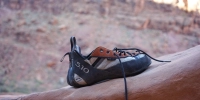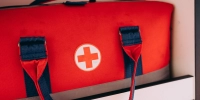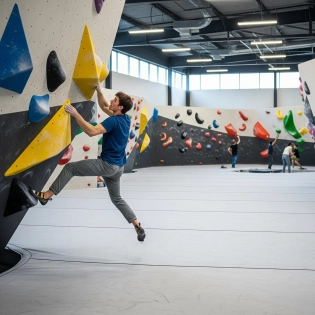







Climbers Point
Yes, you can rock climb two days in a row, but be mindful of your body's limits and take measures to prevent overuse injuries. Start with shorter sessions and gradually increase intensity. Incorporate active recovery strategies between climbing days.
Yes, regular climbing can have an impact on the strength, flexibility, and overall condition of your fingers. Climbing involves repetitive gripping, finger strength exercises, and putting pressure on the joints and tendons in your fingers. Over time, these activities can lead to specific changes in your fingers.
Some common changes that climbers may experience in their fingers include:
- Increased Grip Strength: Climbing challenges your fingers to develop strength, particularly in the flexor muscles that control grip. With regular climbing, you can expect to see improvements in your grip strength, allowing you to hold onto smaller holds and more challenging climbing surfaces.
- Calluses: The repeated friction and pressure on your hands can lead to the formation of calluses, particularly on the pads and sides of your fingers. Calluses help protect your skin from abrasion and can develop as a natural adaptation to climbing.
- Finger Flexibility: Climbing often requires your fingers to stretch and reach for holds in different positions. Over time, you may notice increased flexibility and dexterity in your fingers as they adapt to these movements.
Climbing can indeed contribute to developing stronger and more defined forearms. The sport involves utilizing your grip strength extensively, which places a significant demand on the muscles in your forearms. As you climb, you engage the flexor muscles in your forearms, which are responsible for gripping and pulling.
Over time, consistent climbing and challenging yourself on various routes can lead to increased forearm strength and muscle development. This can result in more prominent and toned forearms.
It's worth noting that the extent of forearm development can vary depending on factors such as climbing frequency, intensity, duration, and individual genetics. Not all climbers will develop large forearms, and the degree of muscle growth will differ from person to person.
Yes, climbing can put stress on your joints, particularly in areas such as fingers, wrists, elbows, and shoulders. The repetitive nature of gripping holds and the dynamic movements involved in climbing can place strain on these joints over time.
However, it's important to note that the impact on joints can vary depending on factors such as climbing technique, intensity, frequency of climbing, and individual body mechanics. Proper climbing technique, including using efficient movement patterns, maintaining good body alignment, and avoiding excessive strain on joints, can help minimize the potential impact on your joints.
Additionally, warming up before climbing, incorporating stretching and strengthening exercises for your joints, and taking rest days to allow for adequate recovery can also help reduce the risk of joint overuse or injury.
If you have a history of joint issues or concerns, it may be beneficial to consult with a healthcare professional or a sports medicine specialist who can provide personalized guidance and recommendations based on your specific needs.
As a climber, I can tell you that hand size is not a limiting factor in rock climbing. Whether you have small hands, large hands, or somewhere in between, you can excel in the sport. Climbing technique, strength, and body positioning are far more important than hand size alone.
While small hands can be advantageous for gripping smaller holds and reaching into tight spots, climbers with larger hands have their own strengths. They may excel in routes that require more brute strength or have larger holds to grasp.
In the end, it's all about adapting and finding the best techniques that work for your own hand size. Every climber has their own unique set of strengths and weaknesses, and hand size is just one aspect of that. So, don't worry about the size of your hands – focus on honing your skills, improving your technique, and enjoying the climb!
Yes, you can definitely get sweaty while bouldering. It's a physically demanding activity that can raise your body temperature and make you perspire. Sweating is a natural response to the physical exertion and helps regulate your body temperature. As you climb, you may notice yourself getting sweaty, especially on your hands. Using chalk can help absorb moisture and improve your grip on the holds. Staying hydrated and taking short breaks when needed can help manage your body temperature.
Chalk is not a strict requirement for bouldering, but it is commonly used by many climbers to improve grip and reduce sweat on their hands. The decision to use chalk while bouldering is a personal preference. Some climbers find that chalk helps absorb moisture, enhance friction, and provide a more secure grip on holds, especially when facing challenging or difficult climbs.
It's not really necessary to wash your chalk bag. If it's from a maintenance perspective, I would say there is no need unless it gets really smelly for some reason, or if it gets very dirty or if something spills in or on it.
With that said, if you do choose to wash it, just make sure it's made out of materials that can be washed in the way you intend to wash it, specifically if you intend to wash it in the washing machine or if you will use any harsh cleaning materials. Best to check with the bags manufacturer to see what they say.
The way I would do it is to fill a bucket with some soap and water, and soak the chalk bag in it while gently squeezing the bag to release any hard bits of chalk or dirt that might be stuck to the bag. Depending on the type of chalk bag, I would take a light brush and scrub the areas that need it, but, it really depends what material the chalk bag is made out of, so use your best judgment. If the chalk bag is made out of a harder and more sturdy fabric, such as jeans, then it would be more durable to some scrubbing, but if it's made out of a material such a crochet or other delicate ones, scrubbing would be out of the picture. After that, I would hang it up to air dry, and then it should be good to go!
It depends how often you use it, and how often you climb really. It could last a few weeks and it could last a few months. If you climb once or twice a week, it will last for a few months. If you climb 4-5 times a week and have long sessions, you will probably be using it a lot more and it will run out of chalk much faster.
Yes, you can refill a chalk ball. Chalk balls are designed to be reusable and refillable. When your chalk ball starts to run low, you can simply open it up, add loose chalk inside, and then close it securely. This allows you to continue using the chalk ball without the need to purchase a new one. Refilling a chalk ball is a cost-effective and environmentally friendly option. Just make sure to use high-quality loose chalk that is suitable for climbing to maintain optimal performance.




